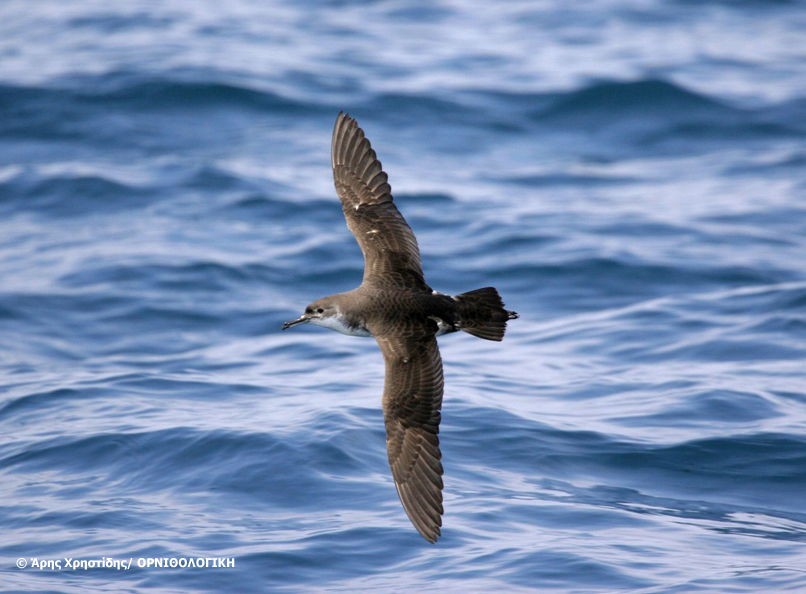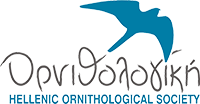During a joint field expedition to Gyaros by the Hellenic Ornithological Society and WWF Greece, scientists discovered one of the most important colonies of Yelkouan shearwaters in Greece. The discovery was made during a field expedition for the collection of data for the avifauna of the island for the purposes of the preparatory action of CYCLADES LIFE.
More specifically, on the 30th of June a joint field expedition was organized for the first time between WWF Greece and the Hellenic Ornithological Society that has been studying seabirds in Greek islands for the past two decades and has thus acquired substantial expertise on the issue. Scientists knew the island of Gyaros provided shelter to land birds and raptors. What they didn’t know was the presence of colonial nesting seabirds such as Yelkouan shearwater and Cory’s shearwater.
The aim of the fieldwork was the complete survey of the terrestrial environment of the island, namely the collection and analysis of data on herpetofauna, avifauna, flora and vegetation. Since 2011, Gyaros has been included in the pan European network of protected areas Natura 2000. The Museum of Natural History of Crete has already completed two field expeditions on the island in order to collect data on the flora and fauna of the island.

For three days, the scientists from the Hellenic Ornithological Society together with the WWF Greece ornithologist Dr. G. Katsadorakis and the CYCLADES LIFE team of WWF Greece made concerted efforts to spot the seabirds. The peculiarity of these birds is that they nest in burrows usually under big rocks. The nest, that birds visit only when the sun goes down, has a very small entrance which cannot be easily spotted. Despite the above difficulties, at the night of 1st July, after a two hour effort, the scientists saw a big “raft” of 2.000 birds who had sat on the sea surface waiting for the night to fall in order to fly to their nests.
“We were aware of the importance of Gyaros for seabirds but we didn’t think that it hosted such a large colony of Yelkouan shearwater. The nocturne counting of the birds at sea, before the birds flew to their nest in order to change shifts with their mate and feed their only chick, were impressive. Gyaros is one of the most important breeding colonies of Yelkouan shearwater that have been spotted so far in the Aegean, similar to those at the islets of Northern Dodecanese, the small Cyclades and Fournoi” stated Danae Portolou, head of the Hellenic Ornithological Society’s expedition.
“The discovery of this important colony of Yelkouan shearwater, increases significantly the ornithological importance of this historical Greek site. This species is added to the list of raptors such as Bonelli’s eagle, the long legged buzzard, common buzzard, the common kestrel and of course the presence of the Mediterranean monk seal” stated WWF Greece’s ornithologist Dr. G. Katsadorakis who participated at the fieldwork.
The collaboration between the two NGOs was effective and immaculate. 6 more field expeditions will take place in the years to come for the purposes of the CYCLADES LIFE project and both NGOs will continue to work together for the complete mapping, monitoring and protection of the avifauna of the island.

Studies and conservation of seabirds in the Greek marine and island regions are carried out by the Hellenic Ornithological Society with the financial support of the A. G. Leventis Foundation.



